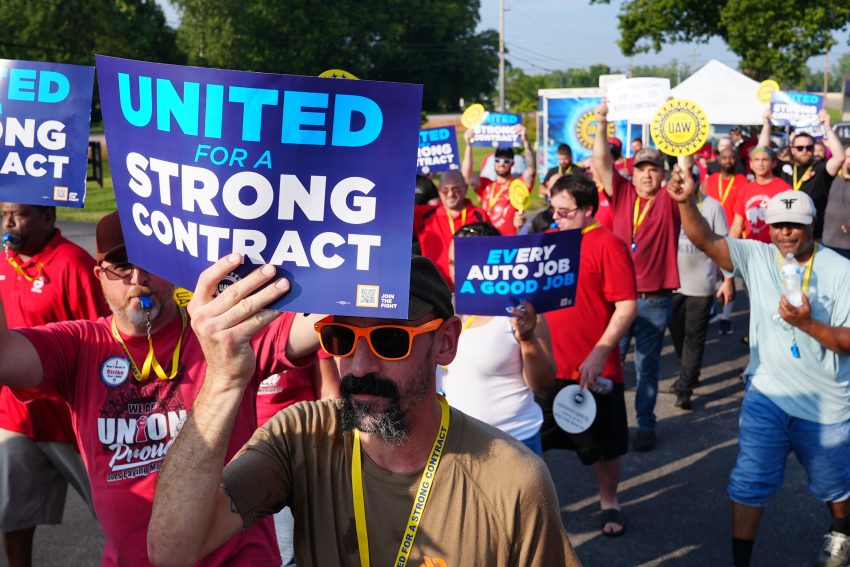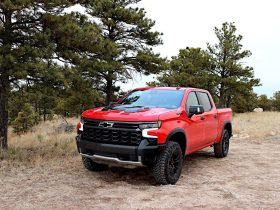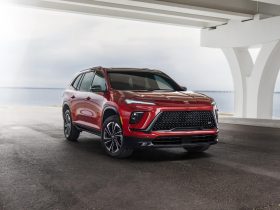About 13,000 auto workers walked off the job in Michigan at 12:00 am this morning as union demands and automaker offers failed to meet. Workers at all three Detroit-based automakers (Ford, General Motors, Stellantis) walked out of select factories to protest the negotiation failures.
This marks the first time in the United Auto Workers union’s history that walkouts from all three automakers have taken place. The strikes, which were timed and strategically chosen, are limited to just one factory for each automaker involved. They are not unilateral strikes, but targeted to drive home the point that the companies will need to step up the compromises or face further downtime.
For their part, automakers are facing a lot of pressures. The political pressure to upgrade facilities and undertake changes and research for electric vehicle production is huge. And not cheap. Meanwhile, workers who’ve given concessions in the past to ease economic woes are demanding they now reap the benefits of that. Even as pressure from other automakers, who’ve set up shop in places where the UAW does not have heavy influence, begins to edge in on the Detroit 3’s EV plans with lower-cost labor.
The UAW members left work and shut down production at Ford’s Wayne, Michigan plant, GM’s Wentzville, Missouri plant, and Stellantis’ Toledo, Ohio plant. This affects production of only a few vehicles for each automaker, avoiding a crippling effect should all high-demand vehicles be lost. And it allows the union to target strike contingency funds to keep workers paid as they picket. The UAW estimates that its strike contingency fund could run indefinitely with just these 13,000 workers drawing from it, but would last only a few weeks should all UAW workers (about 146,000 members) from the three companies walk off the job.
The vehicles affected will include the Ford Bronco and Ranger, the GMC Canyon and Chevrolet Colorado, and the Jeep Wrangler and Gladiator. Commercial vehicles such as the GMC Savana and Chevrolet Express are also affected.
The union is demanding 36 percent wage increases over four years. GM and Ford offered 20 percent raises, according to a UAW spokesperson, and Stellantis offered 17.5 percent. The UAW is also demanding a return of pensions to new hires, a concession made during the 2008-09 negotiations during the recession to lessen the debt burden of these automakers when bankruptcy was looming. The union is also demanding a 32-hour work week with 40 hours of pay. As well as pension increases for retirees and the return of automated cost of living wage increases. And the union is demanding that new joint-venture electric vehicle factories require union labor contracts.
That last is probably the biggest point of contention for the Detroit makes. Most of the joint ventures involve companies that are not in automotive or that are not based in the U.S. And those ventures likely already have contracts and agreements in place, which would have to be amended to accommodate the union demand. That would affect costs and would likely result in less favorable deals for the automakers.
To reference this, the average top-scale assembly plant worker in the UAW averages about $32 per hour plus large profit-sharing checks. Ford says that the average pay for its assembly line workers, including overtime and bonuses, is $78,000 per year. Plus benefits. Ford’s CEO, Jim Farley, has an income of $1.7 million plus stock incentives to a total of about $21M in all.
(Photo courtesy of UAW)







